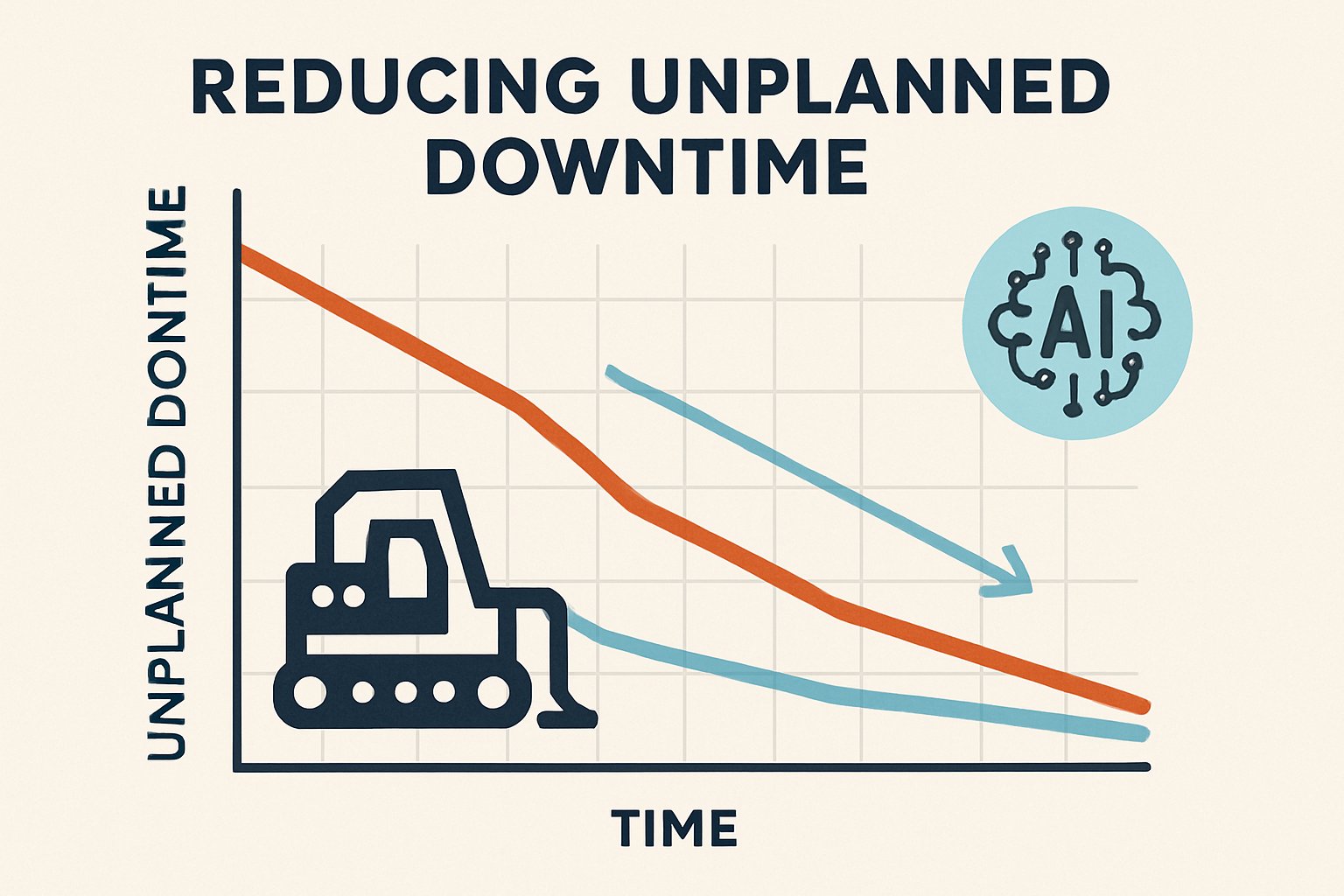
AI CERTS
2 days ago
Predictive Maintenance: Cutting Downtime Claims Explained
This report dissects the claims and offers a clear, evidence-backed roadmap for Manufacturing executives working with Industrial AI teams.
Downtime Claims Under Review
Vendor case studies from OXMaint and MasterOfCode highlight a 67 % reduction in unplanned stoppages. Moreover, several academic pilots mirror that figure. Nevertheless, McKinsey places typical reductions between 30 % and 50 %. Gartner analyst Jo-Ann Clynch adds that governance gaps often erode lofty expectations. Therefore, executives should treat one-site results as promising yet unproven at scale.

These contrasts underscore an essential lesson. Single numbers rarely capture data quality, baseline periods, or false alarms. Consequently, leaders must probe every headline claim before committing capital. The next section shows why market momentum still matters.
Market Growth Signals Confidence
Despite caution, investment surges. MarketsandMarkets forecasts the global Predictive Maintenance market to hit USD 47.8 billion by 2029, growing 35 % annually. Furthermore, Grand View Research sees parallel acceleration across asset-heavy Manufacturing sectors. Industrial AI deployments now move from pilot to portfolio, aided by cheaper IIoT sensors and cloud platforms.
Major incumbents—Siemens, GE Digital, IBM, Microsoft—bundle analytics with existing control software. Start-ups like Augury and Uptake attack niche pain points. Consequently, procurement teams face a crowded field. Yet healthy competition keeps innovation brisk and prices competitive. Next, we examine the technologies fueling this momentum.
Core Technologies Driving Adoption
Real-time anomaly detection kicks off each alert. Edge analytics processes raw vibration, temperature, and acoustic signals locally, reducing latency. Additionally, Digital Twins simulate wear patterns, improving failure mode diagnosis. Machine-learning models then estimate remaining useful life and trigger maintenance tickets inside CMMS tools.
Prescriptive layers go further. They recommend spare parts, technician assignments, and safe shutdown windows. Professionals can enhance their expertise with the AI Quality Assurance™ certification. Consequently, cross-functional skills grow alongside technical stacks. With foundations covered, benefits extend well beyond time saved.
Benefits Beyond Downtime Cuts
Reduced downtime headlines grab attention, yet financial upside runs broader. McKinsey notes machine life can rise 40 %. Moreover, spare-part inventories shrink when teams schedule repairs precisely. Manufacturing plants also cut overtime because work occurs during planned outages. In contrast, reactive repairs often demand emergency crews.
Consider the following advantages:
- Higher Overall Equipment Effectiveness (OEE)
- Lower safety incidents due to fewer catastrophic failures
- Improved energy efficiency as assets run within optimal ranges
Consequently, minor percentage gains translate into millions when hourly losses reach six figures. However, risks lurk behind the upside, as the next section explains.
Risks Temper Vendor Hype
False positives create costly wrench time. Additionally, poor sensor coverage skews models, producing blind spots. Industrial AI teams must balance sensitivity with specificity, or technicians ignore alerts. Data integration also remains hard. Legacy PLCs often store limited historical events, forcing tedious data cleansing.
Cybersecurity adds further complexity. Meanwhile, workforce trust cannot be overlooked; frontline engineers resist opaque algorithms. Therefore, program managers should launch change-management plans alongside algorithms. Understanding these hazards prepares leaders for rigorous validation steps.
Verification Checklist For Leaders
Decision-makers evaluating Predictive Maintenance vendors should demand transparent metrics. McKinsey recommends auditing baseline definitions over identical seasonal windows. Moreover, sample size and independent verification matter. Ask vendors to provide:
- Absolute downtime hours before and after deployment
- Alert lead-time distributions and false positive rates
- Total cost of ownership, including training and sensors
Subsequently, compare savings against deployment spend to calculate payback periods. These checkpoints filter marketing noise and surface durable value. The final section outlines strategic next moves.
Strategic Steps Forward Now
Start with a focused pilot covering high-value assets. Consequently, lessons scale without excessive risk. Engage cross-functional teams early to secure buy-in. Furthermore, embed cybersecurity reviews from day one. Industrial AI specialists should document model transparency to build trust.
After validation, expand sensors and analytics incrementally. Meanwhile, contract clauses should tie payments to verified performance. Finally, cultivate skills through targeted programs and certifications. Such disciplined execution converts potential into repeatable Manufacturing gains.
Predictive Maintenance promises clear rewards when leaders navigate hype with diligence. Market forecasts confirm long-term momentum, and Industrial AI tools mature rapidly. However, rigorous verification and thoughtful change management remain non-negotiable. Consequently, organizations that master both technology and culture will compound efficiency and resilience. Explore the linked certification to deepen expertise and drive future-ready operations.



